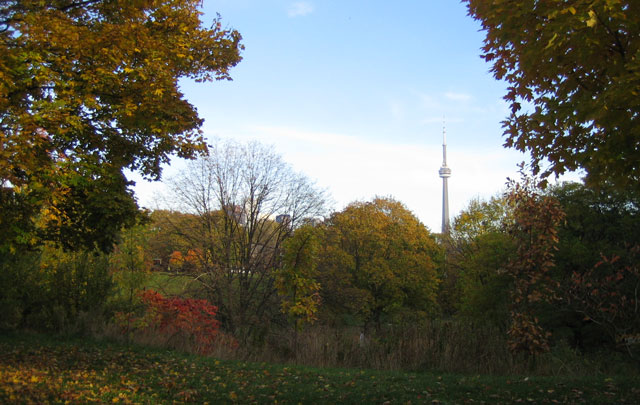A Tale of Three Houses
I wanted to show you three interesting houses in Toronto …
The Farr House
The Farr House is located at 905 Queen Street West and was built in 1847, for John Farr and his family, to replace a wooden structure that was their home prior. He owned a large brewery, built in 1818, that was adjacent to the property.
Today, the brewery is gone but today the base of the old building remains as the foundation for a block of restaurants and shops, as seen in the last picture in this section. The Farr House is just beyond this block.
What makes this house particularly interesting is that at the time it was built, it was more or less in the middle of nowhere, perched on the banks of a river. Yes, there was actually a river running all the way through what is now a fairly central part of the city, draining into Lake Ontario.
In the early 1900s, the river was re-routed into a huge pipe that was buried. As you can imagine, at the time this was a very challenging feat of engineering.
So the river still runs, however it is now underground. In fact, there is a bridge just north of the Karr House that was buried fully in-tact. If you didn’t know this river had been there, you would not realize that it had, except for a deep divot left in Trinity Bellwoods Park. (I wrote about this river here.)
Back when the house was built, Queen Street (which was called Lot Street then) was merely a mud track. There was no electricity or plumbing. The occupants could never have imagined that their house, which is smaller than it appears at only 50 feet wide by 20 feet deep, would one day be surrounded by such busyness and have an electric streetcar running right in front of it.
↑ From what I understand, the foundation of this block, located just to the west of the house, is the original one built by the Farr family for their brewery. The top floors were added later, replacing what was originally there. ↑
The Campbell House
The second house I wanted to show you is called The Campbell House and is located at 160 Queen Street West, just west of University Avenue. It was built in 1822, as the home of Sir William Campbell and his family, and the most interesting part is that it wasn’t originally built at this location. Rather, it first stood at a location 1.5 kilometers south east, (at Adelaide and Frederick Street). With much cost and effort, which involved taking down street poles along the way, the 270 tonne home was moved, intact, in 1972. Check out the old photo of this move in progress below.
Today, The Campbell House is a museum. I haven’t been inside but that is on my list of things I want to do.
Bishop’s Block
The third house is called Bishop’s Block. It was a row-house built in 1833, at University Avenue and Adelaide Street West. The rest of the block was demolished since then, except for this one house, which, in its lifetime has been a home, one of Toronto’s first hotels and a tavern. But for as long as I have known it, it has stood, stark and alone, all boarded-up and abandoned in a parking lot. Then a few years ago, construction began on what would become a very tall building beside it, the Shangri-La Hotel. This new building is now completed and stands at 65 floors high, one of the ten tallest buildings in the city.
But back to Bishop’s Block. One day I was walking by the construction site and noticed that the old building had been torn down. I remember feeling sad about that, but also wondering why they would have left it standing abandoned for decades and then just torn it down now.
However, my observation was wrong. What was actually going on was that the building had been carefully taken down and was being re-built, layer by layer, with the original bricks.
I was enchanted to read a description in this newspaper story, describing how the architect in charge of the project, Scott Weir, keeps one of the old handmade bricks on his desk. The extra special part is that there is a cat paw print embedded in the brick, that would have been made by a cat wandering in the brickyard way back then. I would love to see that brick.
This historic building now being used by a private club, The Soho House, so there is little chance that I’ll be getting inside for a look, but by the photos on their site I can see that it is absolutely stunning inside.
I know that Toronto is a relatively new city compared to places such as London and New York but in the short time it has existed, quite a few of the old buildings have been torn down and replaced. One thing I love about the city though is that they are now, for the most part, not taking down the old buildings to make room for the new. Rather, the new is being built around the old, oftentimes incorporating the old structures right into the new ones.
I could go on for days about old buildings! I hope you enjoyed this little peek into some past history of the city of Toronto.
loulou




















